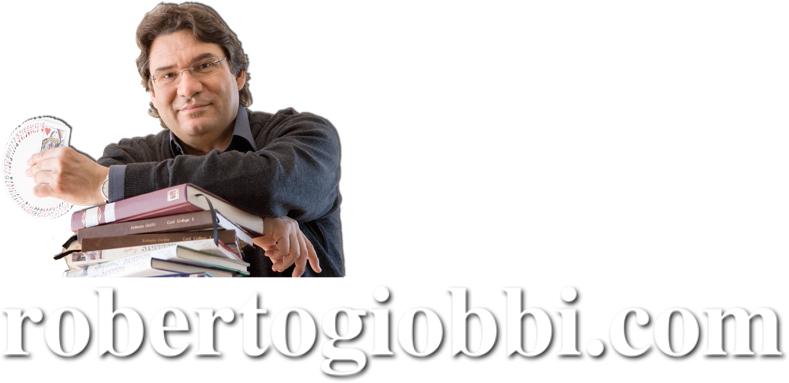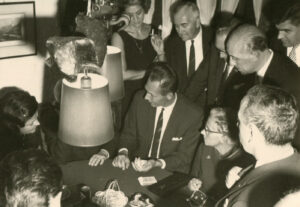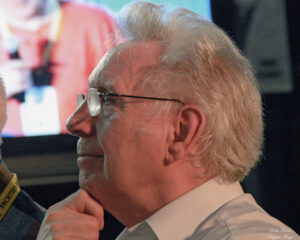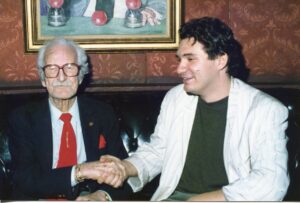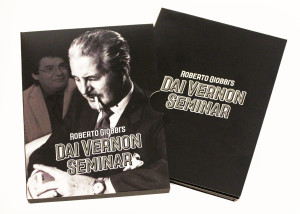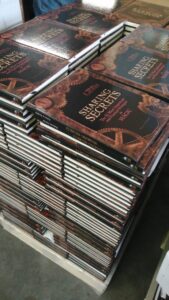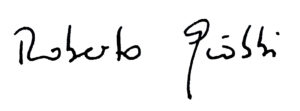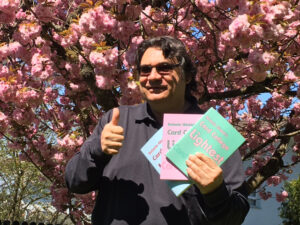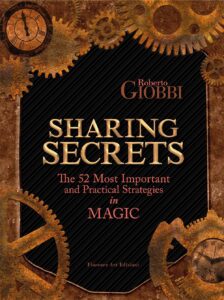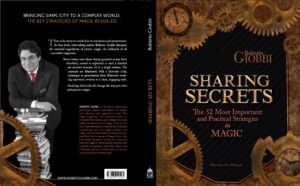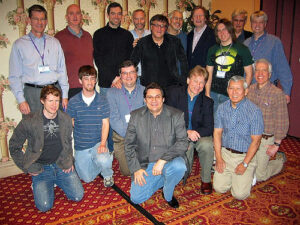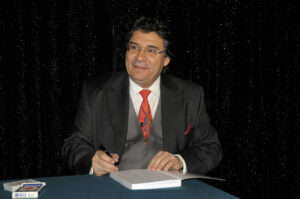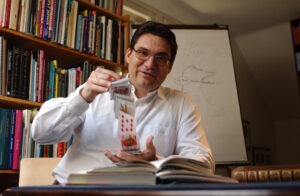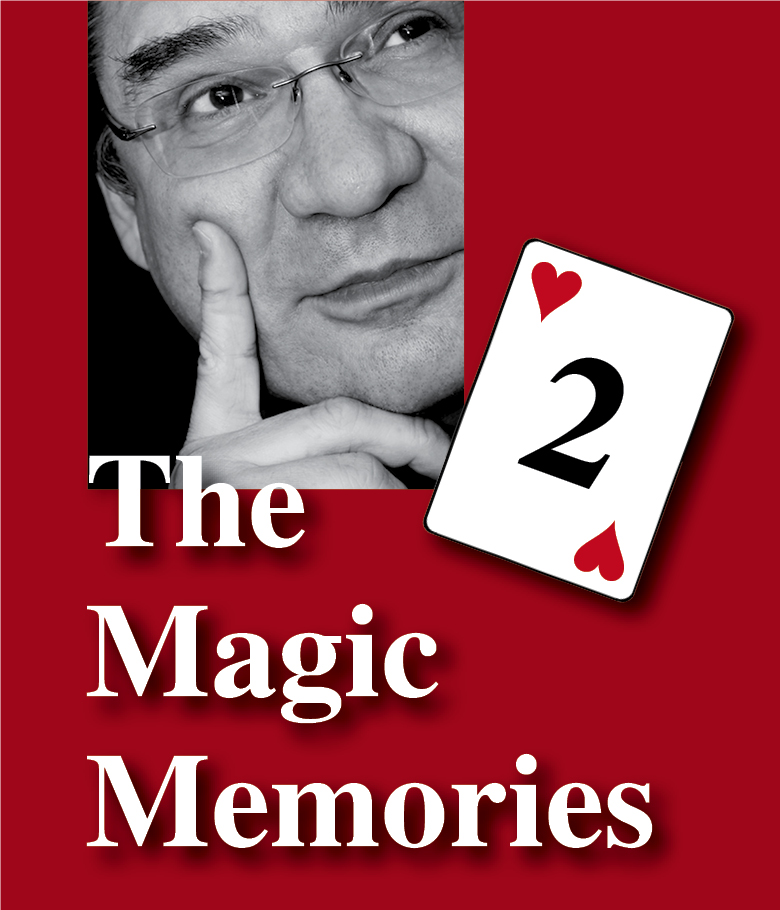
Hi everyone!
Here we are on the 23rd installment of The Magic Memories, born into the virtual world on SUN, 6th June 2021, at 0:07.
Thank you to all who sent their feedback on last week’s topic discussing Fred Kaps’ “Chinese Sticks”. I could spend the rest of the year writing about him and his achievements, as he was such an allrounder, and tops in everything he touched.
“Gipsy Thread” done by Fred Kaps
My work and studies have several links to Fred Kaps, one of them is his “Thought Card In Cigarette”, which I discuss in my book Stand-up Card Magic, also available in German, Italian and French, and in my first Penguin Live Lecture (BTW: Those who say that cigarette tricks are outdated should use their head by putting the idea in a new context…). Another one is “Gipsy Thread” that has been one of the top five “battle horses” in my professional close-up work. There are so many great things about this essentially “simple” trick: it has a clear symbolism, the effect is straightforward and easy to understand, because of this it is easy to tell to others (the hallmark of all classics!), it can be performed for one person or for several hundred in a fairly large theatre, provided the light and sound are good, and of course it is an excellent trick for TV. Before I make a few more comments, see Fred performing the trick on The Parkinson Magic Show from 1976. (You can find the complete show featuring Richiardi Jr., a young Ricky Jay, and of course Fred Kaps with his stage act, plus various close-up pieces, plus his legendary “Eleven Dollar Bill Trick” as a stand-up item on YouTube. ) To watch Kaps do “The Gipsy Thread”, CLICK HERE.
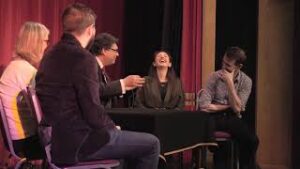
It is only after watching it several times that you discover the many beautiful things contained. The handling with the spool is prodigious. I’ve never found an exact explanation of the handling he uses, and all the methods I’ve tried just did not work 100%. This is why I finally settled on the method I teach on my DVD/Download The Close-up Act. Another very interesting thing is how he handles the switch. Again, I’ve never seen this done by anyone, let alone published anywhere. Most handlings of this moment I’ve seen lack the absolute clarity Kaps’ handling has and which is worth its weight in gold. I seem to be the only one who has recognized and used it for decades now. Last but not least he has a lovely way of getting into and out of it, his management, technical and presentational.
I could give a complete talk about this trick alone, and I have (you bet I did – it’s one of my 58 talks). As far as I can remember I only gave that once at a a three-day workshop for young people (age 12 to 21) organized by the Magischer Zirkel of Deutschland. The poor chaps must have expected a firework of sleights and tricks, but all they got was the performance of one little trick, plus a 45-minute talk on all the tiny details making it up. It was a cruel thing of me to do this 🙂
If you are curious to see my handling and presentation of “Gipsy Thread”, CLICK HERE. You will appreciate that I’ve solved several problems of this trick, e.g. using a flat “spool”, a fool-proof unwinding (you can see that Kaps briefly has a problem when the ball unwinds), the Prologue and Epilogue, and a lot more.
Similar to The Linking Rings, this is one of the tricks that really play big and that can be used for all types of audiences, in virtually all types of situations – there are not many tricks that do this. I will be very candid with you and tell you that The Close-up Act is one of the items I produced in my lifetime that sold very badly, compared to my other products, similar to Confidences, the slowest selling book of mine. I was not surprise, but still very disappointed. In over 3 hours I teach only 4 tricks, but with many additional thoughts, unlike any other magic video I know. However, the tricks themselves are not novel, nor is the presentation eccentric, simply because I’m not an eccentric. But I can honestly say that I’ve been using these tricks (and some others, of course) in the past 30 years of my professional career, that has taken me to four continents, to some of the most beautiful places, performing for some very exclusive companies and private people. So, it is the Real Work, as they say, much more real than the novel stuff that dazzles the eye and is then put aside.
As a last comment, if you have Sharing Secrets, on p. 33 I give my script for the performance of “Gipsy Thread” in the theatre, inspired by Al Koran’s presentation of “The Torn & Restored Cigarette Paper”.
Did I say I like this trick?
Sharing Secrets News
Almost everyone in Europe seems to have received the book, and reactions have been very kind: judging from the feedback I got up to now, it seems that the book is not so bad 🙂 If you are in Europe and have not yet received the book, let me know, and I’ll check/send you the tracking – not all, but most books are trackable (I won’t let you into the intricacies of why some are and others are not, as this is one of the deep mysteries of the post office…). Once again: If you live outside of Europe you need to be patient. However, I’ve received notice that some in USA have already got their copy, so I’m confident this might be faster than the threats from the post office made me think…
Have a great week!
Yours sincerely,
Roberto Giobbi
